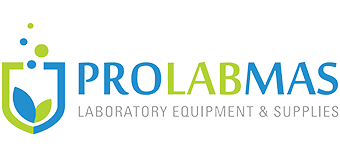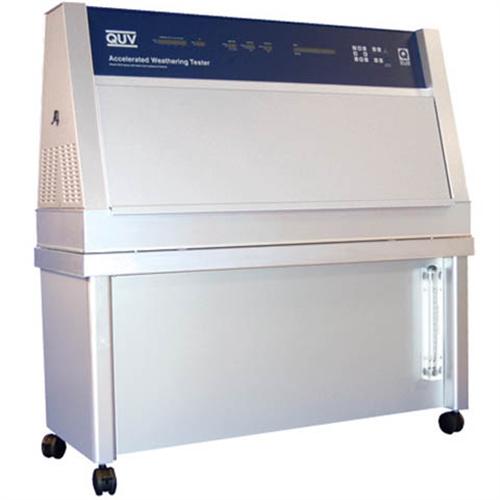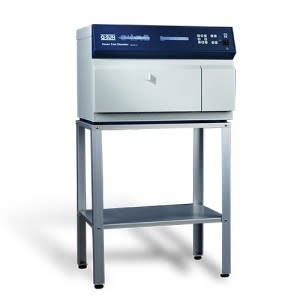The QUV accelerated weathering tester reproduces the damage caused by sunlight, rain and dew. In a few days or weeks, the QUV UV tester can reproduce the damage that occurs over months or years outdoors.
To simulate outdoor weathering, the QUV accelerated tester exposes materials to alternating cycles of UV light and moisture at controlled, elevated temperatures. It simulates the effects of sunlight using special fluorescent UV lamps. It simulates dew and rain with condensing humidity and/or water spray.
The QUV accelerated weathering tester is the simplest, most reliable, and easiest to use weathering tester available. With thousands of testers in use worldwide, it is the world’s most widely used weathering tester.
QUV – The World’s Most Widely Used Weathering Tester
UV light is responsible for almost all photodegradation of durable materials exposed outdoors. The QUV tester’s fluorescent lamps simulate the critical short-wave UV and realistically reproduce the physical property damage caused by sunlight. Types of damage include color change, gloss loss, chalking, cracking, crazing, hazing, blistering, embrittlement, strength loss and oxidation.
Dew, not rain, is responsible for most of the wetness that occurs in outdoor exposure. The QUV UV test chamber’s condensation system realistically simulates dew and accelerates its effect using elevated temperature.
The condensation process automatically purifies the ordinary tap water used in the system. This is because the process of evaporating and condensing the water onto the specimens is actually a distillation process, which removes all impurities. See LU-0801 – QUV Brochure.
The QUV tester conveniently accommodates up to 48 specimens (75mm x 150mm) and complies with a wide range of international, national, and industry specifications, ensuring the reliability and reproducibility of your test program. Visit our standards page for more information.
Easy to Operate
The QUV UV tester’s simple, proven design makes it easy to install, easy to use, and almost maintenance-free. It operates completely automatically, 24 hours a day, 7 days a week. Features include:
- Simple user interface for easy programming in five user-selectable languages: English, French, Spanish, Italian or German
- Exposure conditions displayed continuously
- Self-diagnostic warnings and service reminders
- Quick calibration with patented AUTOCAL system
Affordable
The QUV tester is economical to purchase and to operate, because it uses:
- low cost, long life fluorescent UV lamps
- ordinary tap water for condensation
Models (see also Features Tab)
- QUV/basic: UV and condensation (no irradiance control)
- QUV/se: UV, condensation and SOLAR EYE irradiance control
- QUV/spray: UV, condensation, SOLAR EYE irradiance control and water spray
- QUV/cw: cool white visible light, condensation and SOLAR EYE irradiance control
See LU-0819 – QUV Specifications or the Features Tab for comparative capabilities.
More info:
https://www.q-lab.com/products/quv-weathering-tester/quv
Model QUV/basic
This is a simplified version of the QUV tester for the lab where economy is critical. The model QUV/basic uses fluorescent UV lamps and a condensation system for moisture simulation. The model, however, does not include the SOLAR EYE irradiance control. Consequently, the light intensity cannot be adjusted or calibrated. This means the QUV/basic tester cannot be used for high irradiance testing. In addition, periodic lamp replacement and repositioning is required.
Q-Lab recommends the QUV/basic tester for comparative exposures where the test specimens and the control specimens are exposed at the same time, in the same tester.
Model QUV/se
The most popular QUV model features the SOLAR EYE Irradiance Control, for precise maintenance of UV light intensity. The QUV/se tester uses a proven condensation mechanism to simulate outdoor moisture attack.
The SOLAR EYE system is a precision control system that automatically maintains light intensity through a feedback loop. The controller monitors UV intensity and compensates for lamp aging and variability by adjusting power to the lamps. The SOLAR EYE system provides:
- Controlled irradiance
- Longer lamp life
- Faster results
- More reproducible and repeatable testing
- ISO calibration
For more information on the benefits of the SOLAR EYE irradiance control system, see LU-0801 – QUV Brochure.
Model QUV/spray
The QUV/spray tester has the same functions as a standard QUV/se, but also includes a water spray system. Short periods of spray can be used to create a thermal shock. Longer periods can be used to achieve mechanical erosion. The QUV/spray tester can be set to produce: UV alone, spray alone, or condensation. Deionized water is recommended for all spray applications.
Model QUV/cw
Some industry test methods specify the use of cool white fluorescent lamps for indoor photostability testing. To reproduce these indoor light conditions, the QUV/cw uses ordinary cool white fluorescent lamps. It has a SOLAR EYE irradiance control system that monitors and controls visible light output, rather than UV. See LU-0823 – QUV/cw Summary for more information.
Temperature Control
All QUV UV testers precisely control temperature to enhance accuracy and accelerate test results. Although temperature does not normally affect the primary photochemical reaction, it does affect the rate of any subsequent reactions. Therefore, the QUV tester’s ability to control temperature is essential during UV exposure.
Versatile Specimen Mounting
Standard specimen holders easily adjust for any thickness up to 20mm (3/4″) and allow fast, snap-action specimen mounting. Retaining rings provide positive hold-down and do not require that test specimens be cut to close tolerance. In addition, custom holders are available for mounting various products, such as lenses, larger specimens, and 3-D components. See the accessories tab or our specimen mounting page for more information.
Controls & Optional Software
Designed to be both functional and easy to use, the QUV controller can be programmed in five user-selectable languages (English, French, Spanish, Italian or German) and includes complete self-diagnostic error checking. The controller constantly monitors the status and performance of all systems. It also displays simple warning messages, routine service reminders or performs safety shutdown, as needed.
An external USB port on every QUV tester allows users to perform software upgrades quickly to address key performance issues. For quality systems that require documented proof of test conditions, this USB port can also be used to download tester performance history. Additionally, every QUV tester is equipped with an Ethernet connection. Optional VIRTUAL STRIPCHART PC software allows the user to automatically record and monitor exposure conditions and directly transfer data from the QUV UV test chamber to a Windows-based computer. Data from either the USB export or PC application can be emailed directly to Q-Lab’s technical support desk for expert troubleshooting and diagnostics.
QUV Lamps
Fluorescent UV lamps are inherently more stable than other types of lamps, including xenon arc lamps. The spectral power distribution (SPD) does not change with lamp aging, even up to 8,000 hours. This gives more reproducible test results, fewer lamp changes, and lower operational costs.
Q-Lab produces more UV lamps than the rest of the weathering industry combined. Q-Lab’s lamps are specially engineered to our own proprietary specifications, based on our 50 years of experience with fluorescent UV technology. We have the most stringent quality control testing in the industry. The result is that the QUV tester provides the most consistent, stable spectrum, year after year.
Several different types of UV lamps are available for different applications, which are listed below. See LU-8160 – A Choice of Lamps for QUV and LU-0823 – QUV/cw Summary for more specific application guidelines
UVA-340 Lamps
The QUV tester’s UVA-340 lamps give the best simulation of sunlight in the critical short wavelength region from 365 nm down to the solar cut-off of 295 nm. See LU-8052 – SPD for QUV UVA-340.
UVA-340+ Lamps
UVA-340+ lamps offer the same spectrum as UVA-340 lamps but provide longer lifetime at high irradiance, up to 1500 hours at 1.55 W/m2/nm and 750 hours at the maximum irradiance (1.70 W/m2/nm).
UVA-351 Lamps
The QUV UV tester’s UVA-351 lamps simulate the UV portion of sunlight filtered through window glass. It is most useful for interior applications, for testing of some inks and for polymer damage that can occur in an environment near a window. See LU-8053 – SPD for QUV UVA-351.
UVB-313EL Lamps
The QUV tester’s UVB-313EL lamps maximize acceleration utilizing short-wave UV that is more severe than the UV normally found at the earth’s surface. Consequently, these lamps may produce unrealistically severe results for some materials. UVB-313EL lamps are most useful for QC and R&D applications, or for testing very durable materials. See LU-8051 – SPD for QUV UVB-313EL.
UVB-313EL+ Lamps
UVB-313EL+ lamps offer nearly the same spectrum as UVB-313EL lamps but provide longer lifetime at high irradiance, up to 1500 hours at 1.55 W/m2/nm and 750 hours at the maximum irradiance (1.70 W/m2/nm)
QFS-40 Lamps
Also known as FS-40 or F40 UVB, this is the original QUV lamp. FS-40 lamps are still specified in a few legacy automotive test methods. QFS-40 lamps should only be used in the QUV/basic tester. See LU-8050 – SPD for QUV QFS-40.
Cool White Lamps
The QUV UV test chamber’s cool white lamps (used only in model QUV/cw) effectively reproduce and accelerate indoor lighting conditions encountered in office and commercial environments as well as retail display lighting. See LU-8049 – SPD for QUV/cw.








